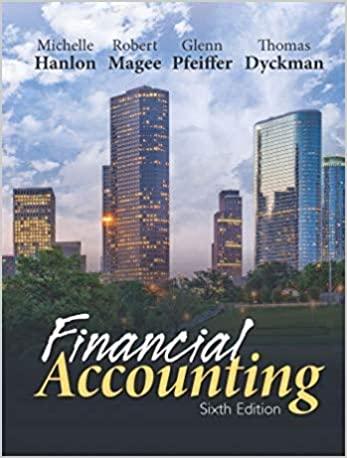Question
1. Mr. A is considering purchasing shares at $900 each having face estimation of $100. He is anticipating a reward at the proportion of 1:
1. Mr. A is considering purchasing shares at $900 each having face estimation of $100. He is anticipating
a reward at the proportion of 1: 5.9 during the fourth year. Yearly expected profit is 70% and the
same rate is required to be kept up on the extended capital base. He plans to sell the
shares toward the finish of seventh year at a normal cost of $989 each. Coincidental costs
for buy and offer of offers are assessed to be 5.89% of the market cost. He anticipates a
least return of 12.89% per annum.
Should Mr. A purchase the offer? Provided that this is true, what greatest cost would it be advisable for him to pay for each offer?
Accept no assessment on profit pay and capital addition.
2. Prime expense can be characterized as:
a. The absolute expenses of assembling an item
b. The complete direct expenses of assembling an item
c. The absolute expenses of working the creation division where the item is made
d. The expense of the main phase of the assembling of an item
3. Which of the accompanying best portrays a fixed expense?
a. Has an immediate relationship with yield
b. Increments proportionately with yield
c. Addresses a fixed extent of all out costs
d. Stays steady regardless of the degree of action
4. Direct work costs will include:
a. Direct work costs in addition to any rewards and extra time expenses
b. Direct work costs in addition to any rewards
c. Absolute direct work hours at the typical hourly pace of pay
d. All work costs owing to an item
5. The organization which applied first 'In the nick of time' in its assembling is -
a. GE Electricals b. Motorola
c. Toyota d. Suzuki
6. - is created on the idea 'stock is detestable'.
a. Quality circle b. JIT
c. Kaizen d. These
7. JIT was first evolved by:
a. Taiichi Ohno b. Ouchy
c. Kaplan d. None of these
8. "Kanban' framework is like - reasoning
a. Kaizen b. Cost driver
c. Without a moment to spare d. None of these
9. Which of coming up next is/are the strategy for building up 'target cost'?
a. Expansion strategy b. Deduction technique
c. Mix technique d. These
10. Collected expense of a movement called - in Activity based costing.
a. Cost driver b. Cost object
c. Cost focus d. Cost Pool
Step by Step Solution
There are 3 Steps involved in it
Step: 1

Get Instant Access to Expert-Tailored Solutions
See step-by-step solutions with expert insights and AI powered tools for academic success
Step: 2

Step: 3

Ace Your Homework with AI
Get the answers you need in no time with our AI-driven, step-by-step assistance
Get Started


